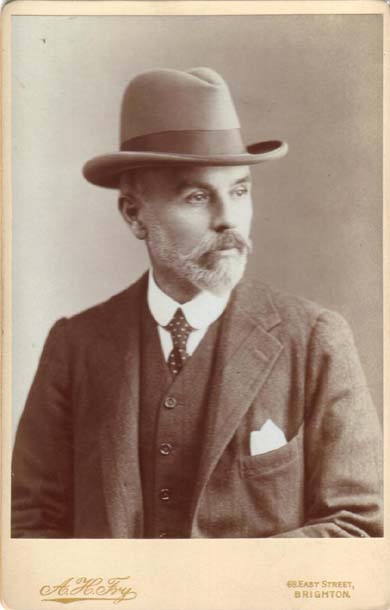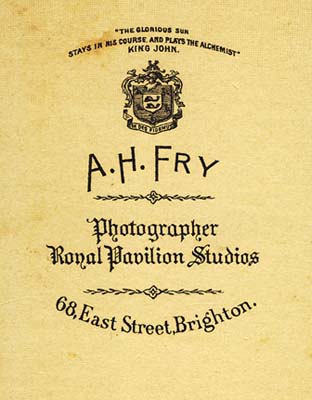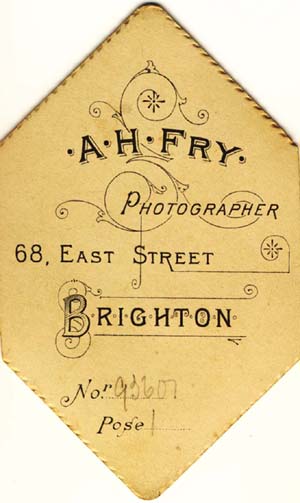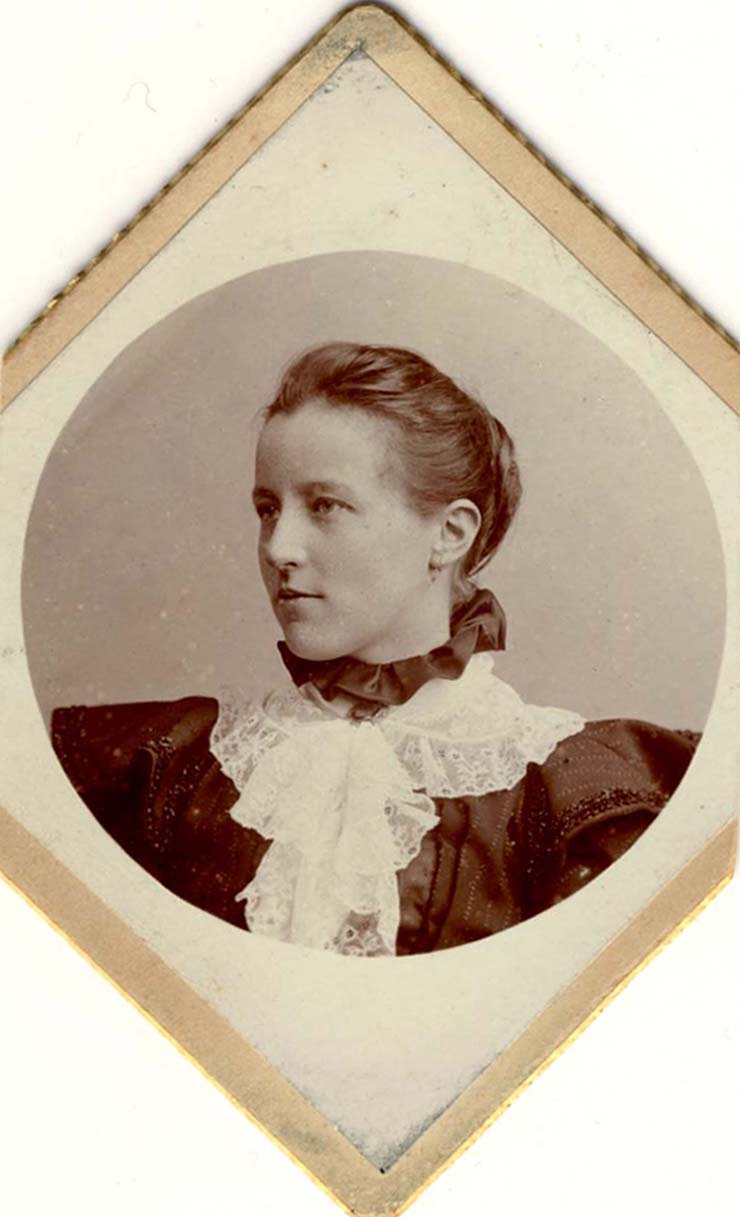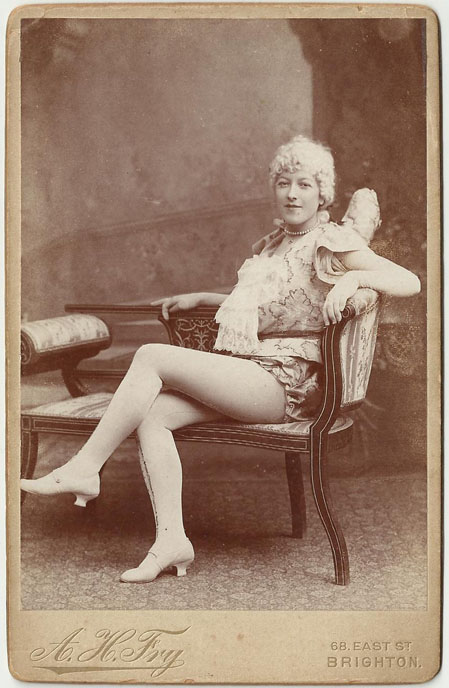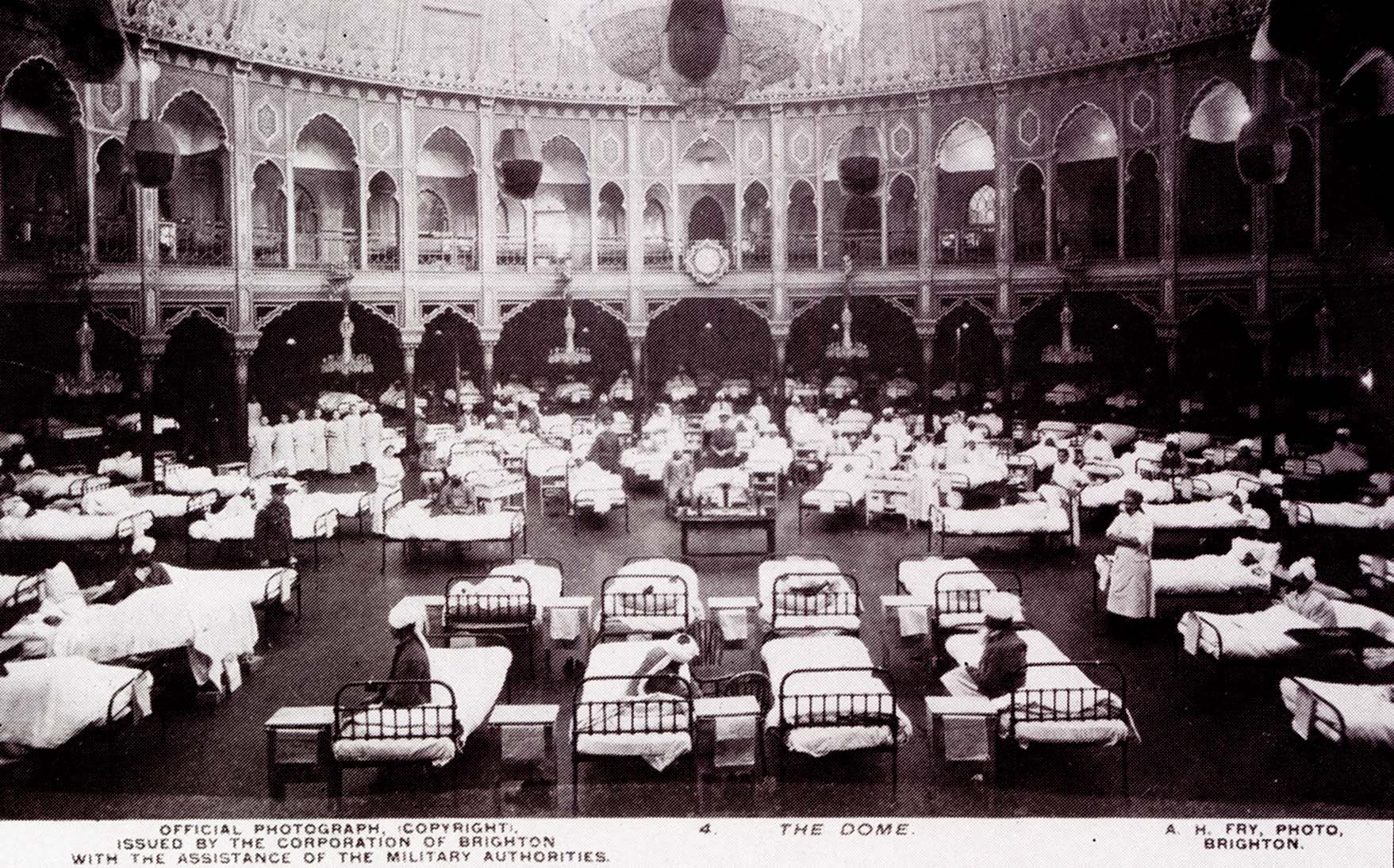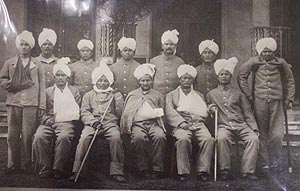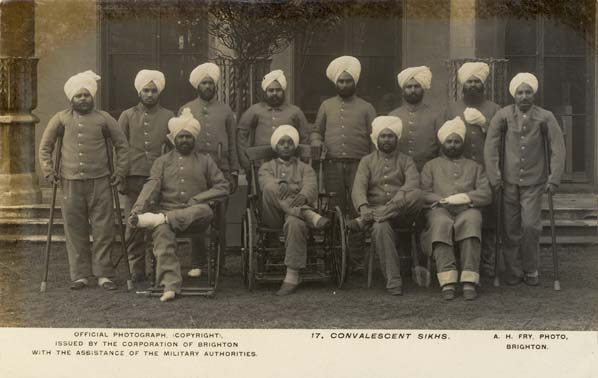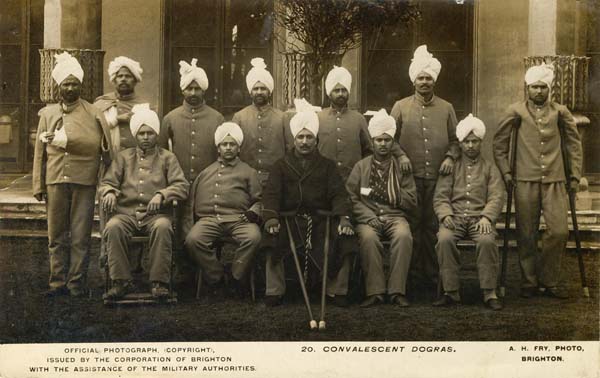| Allen Hastings Fry took control
of the photographic studio at 68 East street, Brighton when his
older brother Walter Henry Fry retired from the business around
1897. Allen Hastings Fry was to operate as a photographer from 68 East
street for another 25 years. ( A. H. Fry is listed as a photographer at
68 East street, Brighton in the 1922 edition of Kelly's
Directory of Sussex. When the 1901 census was taken, Allen Hastings Fry was still living at 13 Hanover Crescent, Brighton with his wife Leonie. Allen H. Fry is described on the census return as a "Photographer (own account)", aged 53. His wife, Mrs Leonie Fry, perhaps conscious of the age difference between her and her husband, gives her age as 52, when in fact she was in her early sixties. ( Leonie had also reduced her age by ten years from 52 to 42 when the 1891 census return was completed ). Allen Hastings Fry and his wife Leonie resided at 13 Hanover Crescent, Brighton for over 20 years. By 1911, Allen Hastings Fry had moved out of the centre of Brighton and was residing at 8 Addison Road, Hove. Allen Hastings Fry was still living in Hove when his wife died during the 2nd Quarter of 1915, at the age of 76. Although Allen Hastings Fry was a successful photographer with a long, distinguished career, he had a wide variety of interests outside of photography. In the late 1890s A. H. Fry was the Honorary Secretary of the Brighton branch of the Royal National Lifeboat Institution and for twenty years he was Captain of the Brighton Volunteer Fire Brigade. Fry was also a Sub-Lieutenant in command of the Royal Naval Artillery Volunteers up to their disbandment in 1892. ( It seems ironical that Allen Hastings Fry, the son of a Quaker peace activist, was so interested in military activities. An article published in the magazine The Professional Photographer' in 1916, pointed out that, as a photographer, Allen Hastings Fry actually "specialized" in "military" work ). Allen H. Fry was a keen cyclist and sportsman. For many years, Allen Fry was an enthusiastic member of the Brighton Bicycle Club. ( In 1878, a cycling magazine referred to Allen Fry as " Mr Fry, the eminent photographer of Brighton, a member of the Brighton B.C. (Bicycle Club) and a great cyclist". The article entitled "A. H. Fry - Brighton" published in the magazine 'The Professional Photographer' in 1916, mentions that Fry's studio dressing-room contained a glass case holding "over thirty pieces of plate which would have been either presentations or else trophies won in various sports." Fry regularly visited the National Rifle Association meetings at Wimbledon and Bisley. Even in his sixties, Allen Hastings Fry was a physically active man. In 1916, at the age of 68, he was photographed with his bicycle, which he used for his lengthy photography trips. By his own admission, Fry frequently went out in the Brighton lifeboats when he was working for the Royal National Lifeboat Institution (R. N. L. I.). Allen Hastings Fry died in Hove, Sussex, during the 4th Quarter of 1931, at the age of 84. |
|

